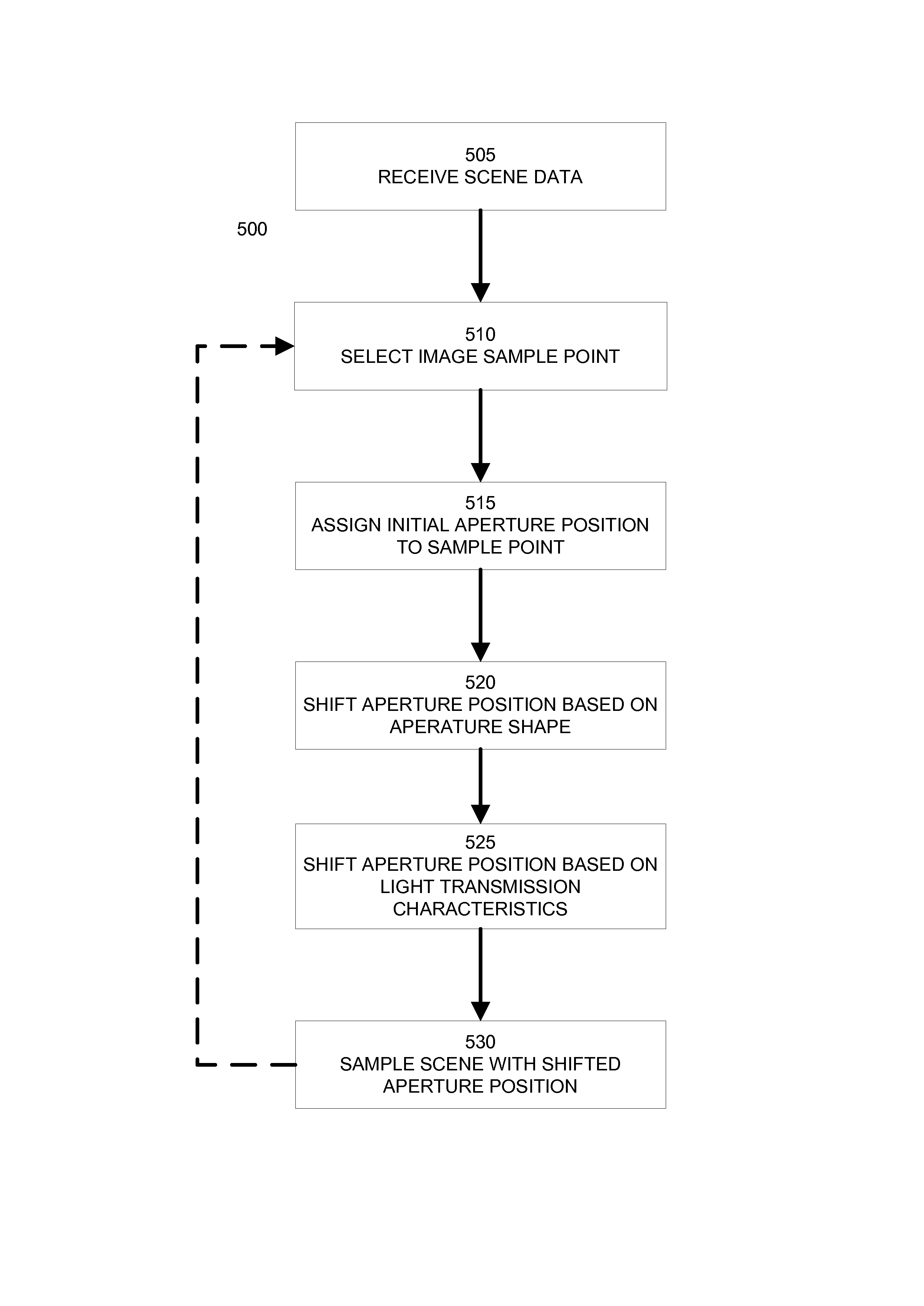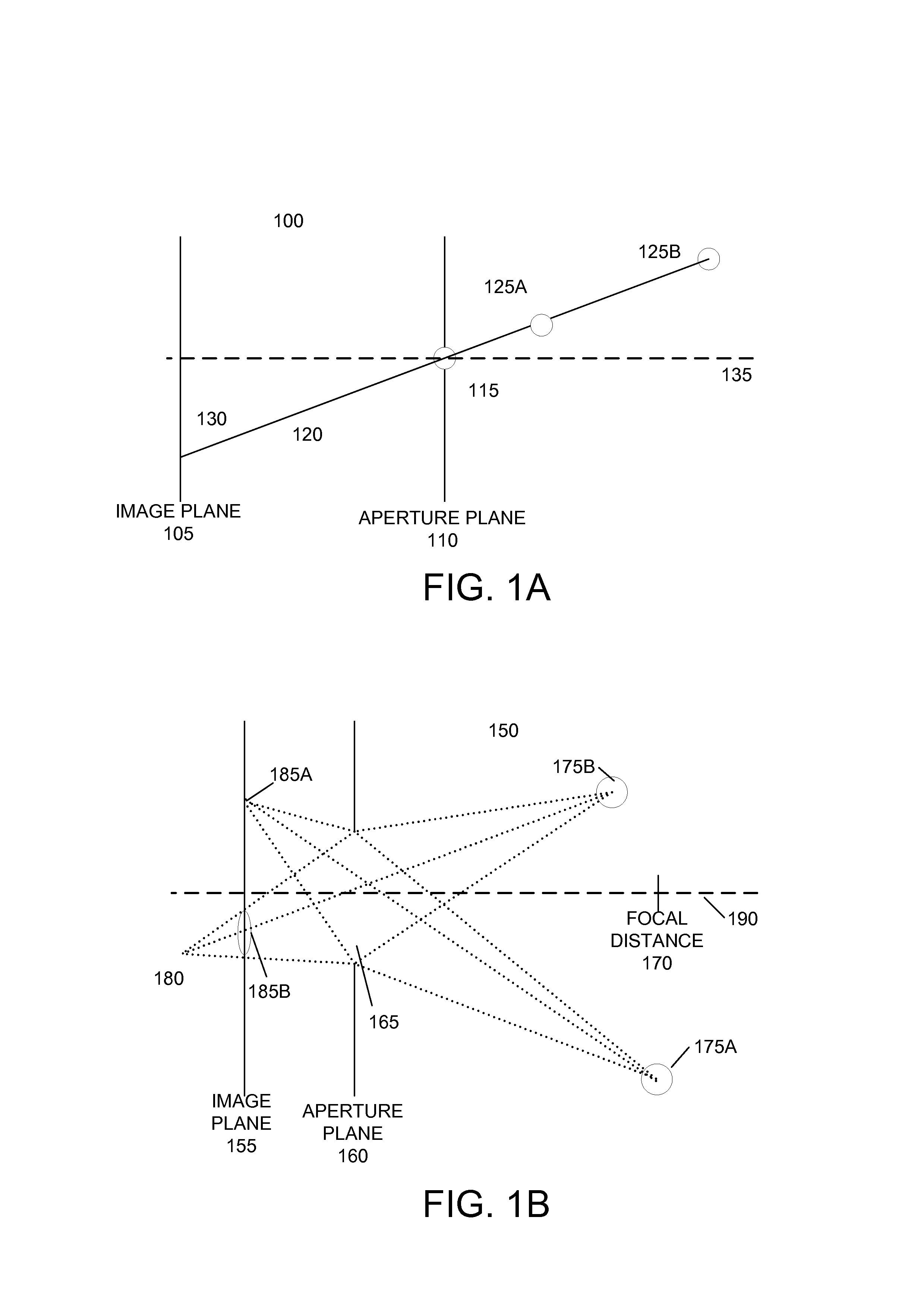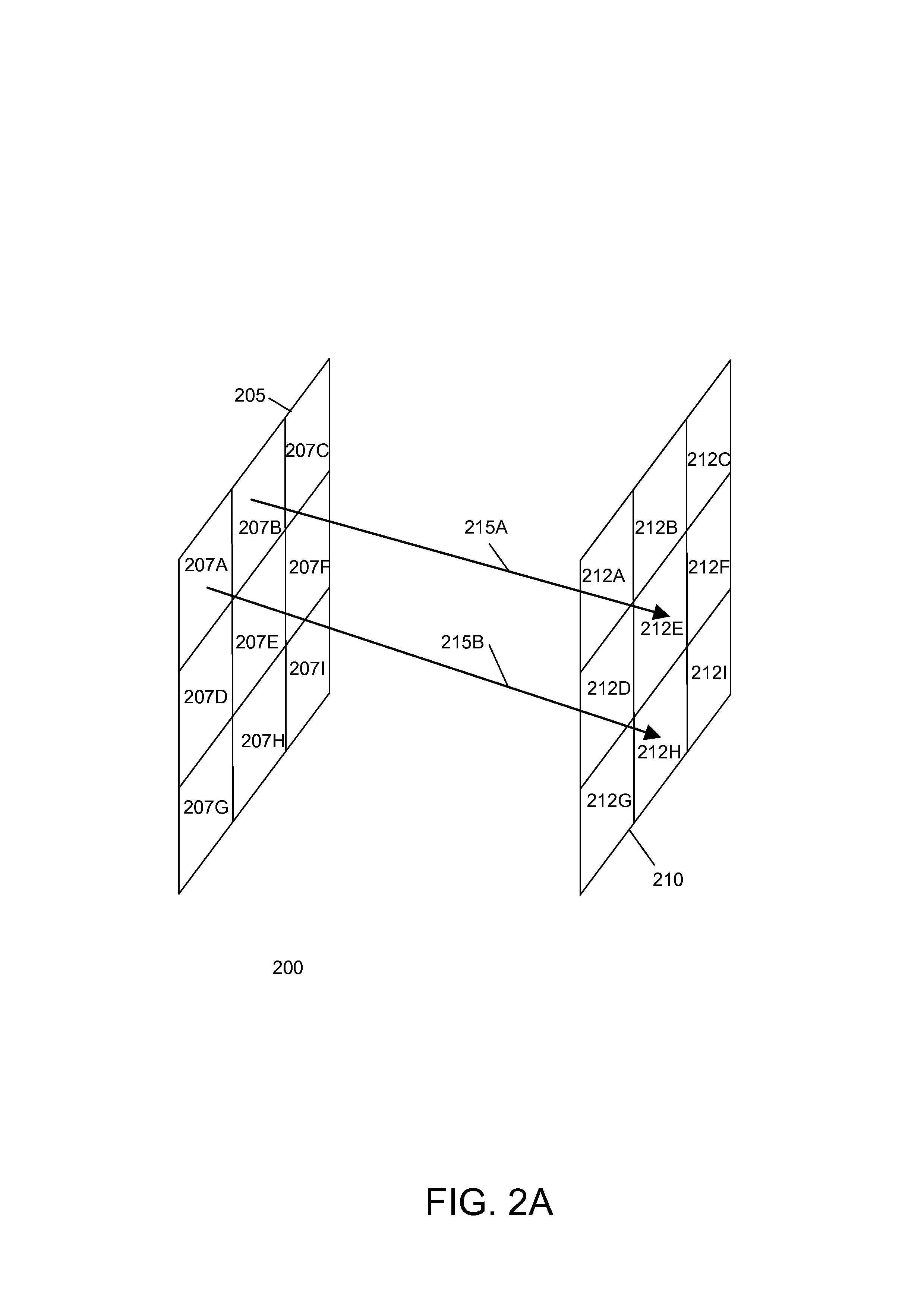Optical system effects for computer graphics
a computer graphics and optical system technology, applied in the field of computer graphics, can solve the problems of large amount of ray tracing in rendering, and large computational time and resources, and is unsuitable for many real-time applications and non-real-time applications where computational time and resources are limited
- Summary
- Abstract
- Description
- Claims
- Application Information
AI Technical Summary
Benefits of technology
Problems solved by technology
Method used
Image
Examples
Embodiment Construction
[0021]FIGS. 1A and 1B illustrate the cause of depth of field effects in real-world optical systems. FIG. 1A illustrates an example optical system 100 including an image plane 105 for receiving light that forms an image and an aperture plane 110 to admit light from a scene onto the image plane 105. Aperture plane 110 include an aperture or opening 115 to admit light from the scene. In example system 100, aperture 115 is a pinhole aperture, which ideally is infinitesimally small. System 100 has an infinite depth of field. The light from any object, regardless of its distance from the aperture plane 110, will pass through a single point, the pinhole aperture 115, and be focused perfectly on the image plane 100. For example, light from objects 125a and 125b are both focused to a single point 130 on image plane. An optical axis 135 is perpendicular to the image plane 105 and passes through the aperture 115.
[0022]In contrast, FIG. 1B illustrates an optical system 150 with a finite depth o...
PUM
 Login to View More
Login to View More Abstract
Description
Claims
Application Information
 Login to View More
Login to View More - R&D
- Intellectual Property
- Life Sciences
- Materials
- Tech Scout
- Unparalleled Data Quality
- Higher Quality Content
- 60% Fewer Hallucinations
Browse by: Latest US Patents, China's latest patents, Technical Efficacy Thesaurus, Application Domain, Technology Topic, Popular Technical Reports.
© 2025 PatSnap. All rights reserved.Legal|Privacy policy|Modern Slavery Act Transparency Statement|Sitemap|About US| Contact US: help@patsnap.com



